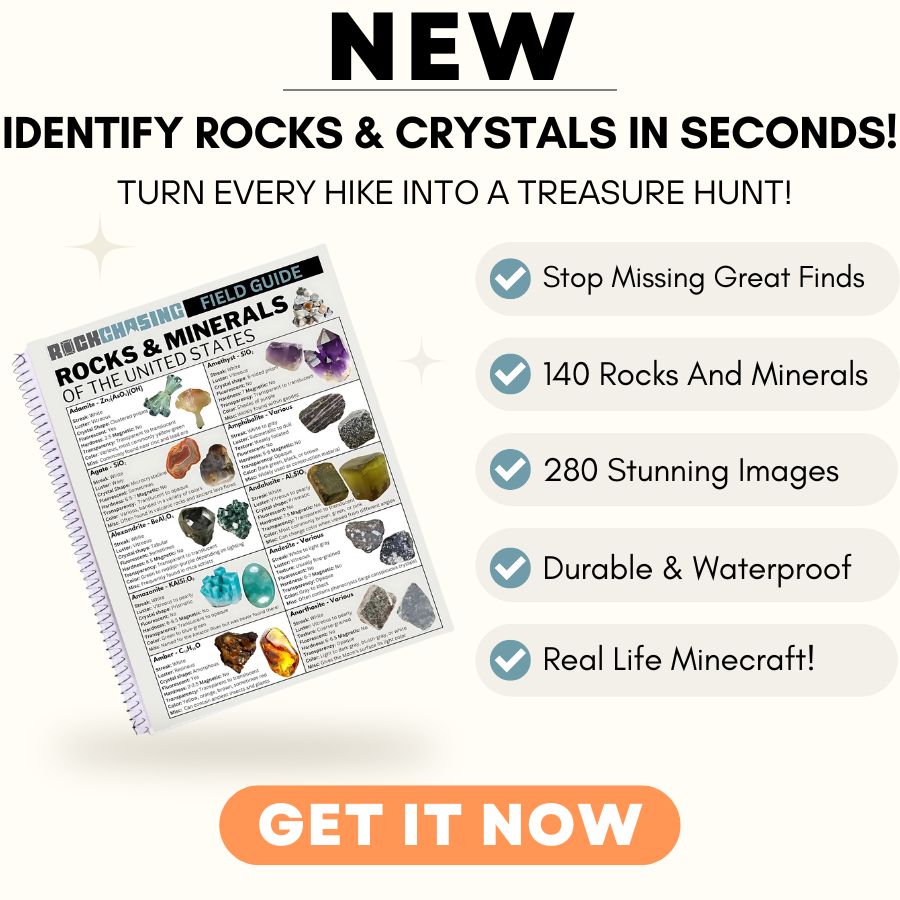Tourmaline is a beautiful gem that comes in many colors. Our state is a treasure trove for gem hunters looking for this special stone. With its varied landscapes, this area is perfect for those who love to search for beautiful rocks.
In this guide, we’ll take you on a journey through some of the best spots in our state to find tourmaline. We’ll also share some handy tips to make your hunt more successful.
Get ready to explore the natural beauty of this gem-rich region and maybe even take home a colorful tourmaline of your very own!
How Tourmaline Forms Here
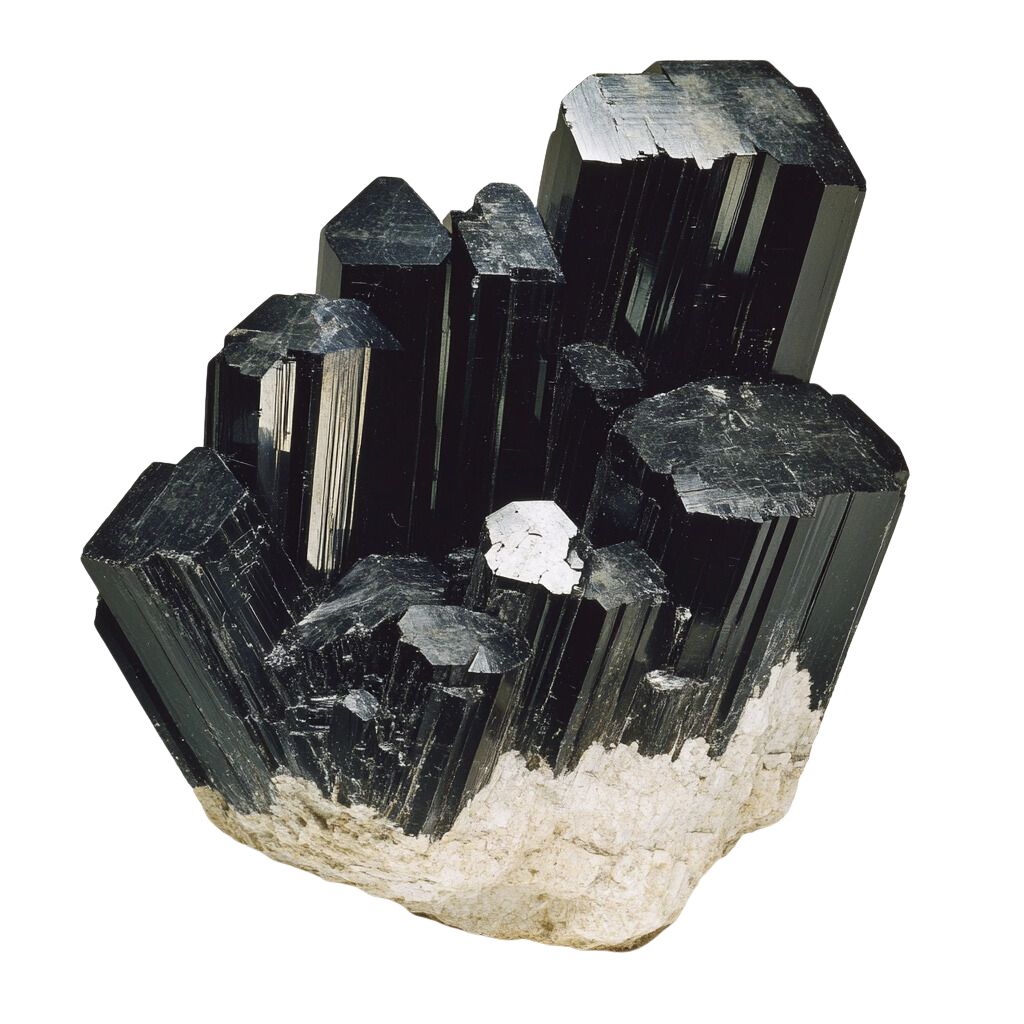
Tourmaline forms deep underground through intense heat and pressure. It originates from hot, mineral-rich fluids that move through fractures in rocks like granite and pegmatite. As these fluids cool, the minerals within them start to crystallize, forming tourmaline.
The color of tourmaline depends on the specific minerals involved, leading to a wide range of hues including pink, red, green, and blue.
Over millions of years, these crystals grow and become the beautiful, multifaceted stones we see today. Tourmaline is prized for its variety of colors and is often used in jewelry and decorative items.
The Types Of Tourmaline
Several incredible types of Tourmaline can be found in the US as well as in our state. Each is uniquely beautiful and interesting including:
Elbaite
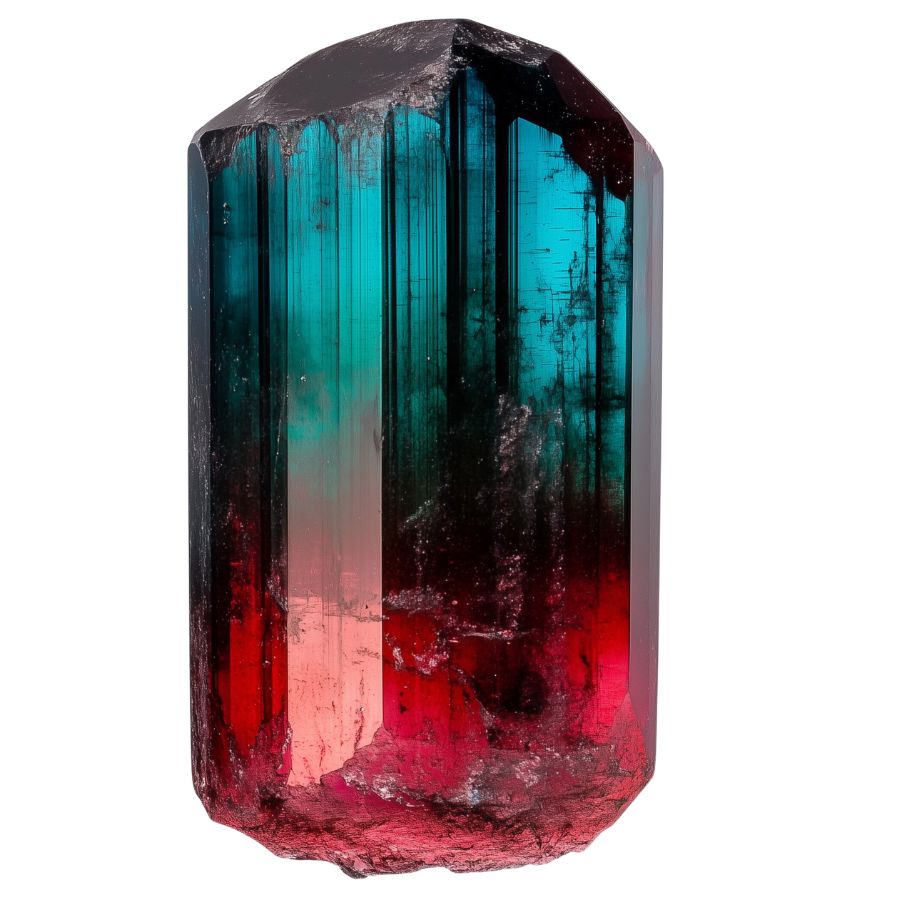
Elbaite is found in pink, red, green, blue, yellow, and even colorless forms. What makes elbaite special is its ability to show multiple colors in a single crystal, like the famous “watermelon” tourmaline with pink and green hues.
This gem stands out due to its complex chemical makeup, which includes lithium, sodium, and aluminum. This composition gives Elbaite its diverse color range and dichroism, allowing it to display different colors when viewed from different angles.
Elbaite has a unique place in history as the first tourmaline variety in which lithium was discovered back in 1818. Some rare types, like the neon blue Paraiba elbaite, are highly sought after by collectors and jewelers.
Schorl
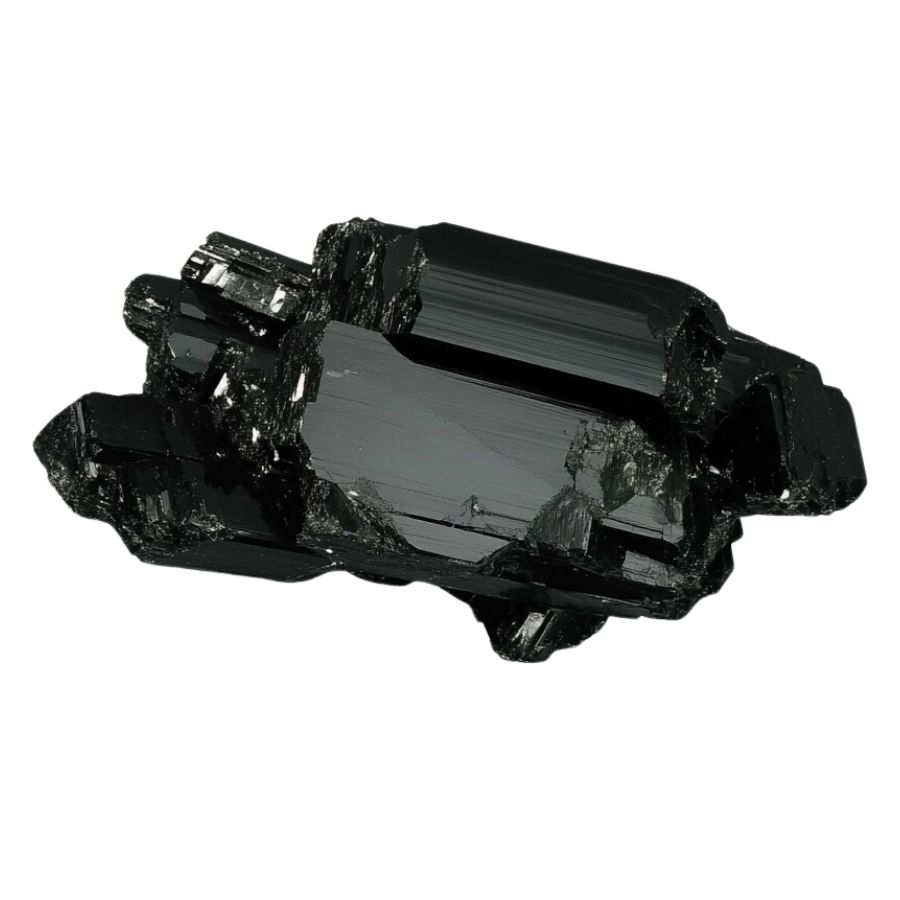
Schorl is known for its deep, rich color. It typically forms long, prismatic crystals with a shiny, glass-like surface when polished. Unlike other tourmalines, schorl gets its distinctive black color from high iron concentrations.
One of Schorl’s most fascinating features is its ability to become electrically charged through heating or rubbing. When charged, it can attract or repel small particles.
This unique electrical property makes Schorl valuable in various industries. It’s used in electronics and manufacturing to control static electricity and electromagnetic interference.
Despite being less colorful than other tourmalines, schorl’s practical applications make it an important and interesting variety.
Rubellite
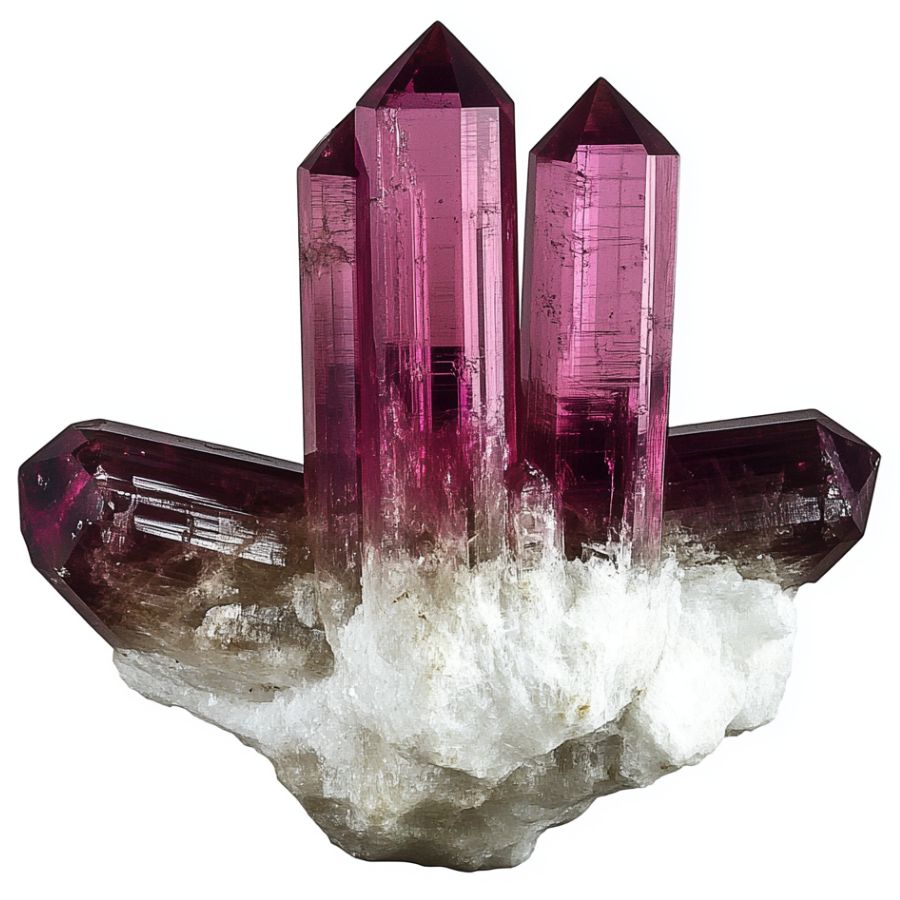
Rubellite stands out with its vibrant pink to red colors. The most prized ones show a pure, saturated red without any brown or orange hints. This beautiful color comes from manganese in its makeup.
One cool thing about rubellite is its double refraction. It can look like it has two different colors when you view it from different angles.
Dravite
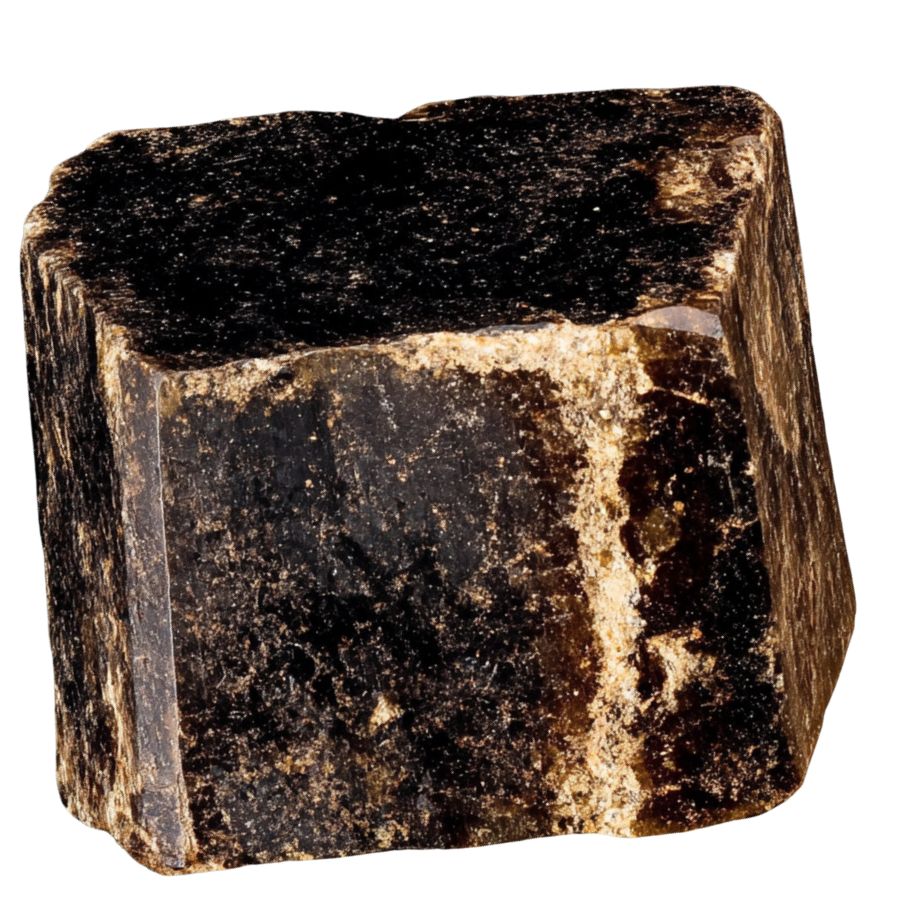
Dravite, or Brown Tourmaline, comes in shades from dark brown to light brown-yellow. It can look a bit like Smoky Quartz, with a semi-see-through quality.
Its crystals are often needle-like or prismatic, with points at both ends. This sets it apart from other tourmalines like the darker schorl or the colorful elbaite.
What makes dravite special is its rich sodium and magnesium content. This sets it apart from other tourmalines. It was first discovered in 1883 and named after the Drava River in Slovenia.
Indicolite
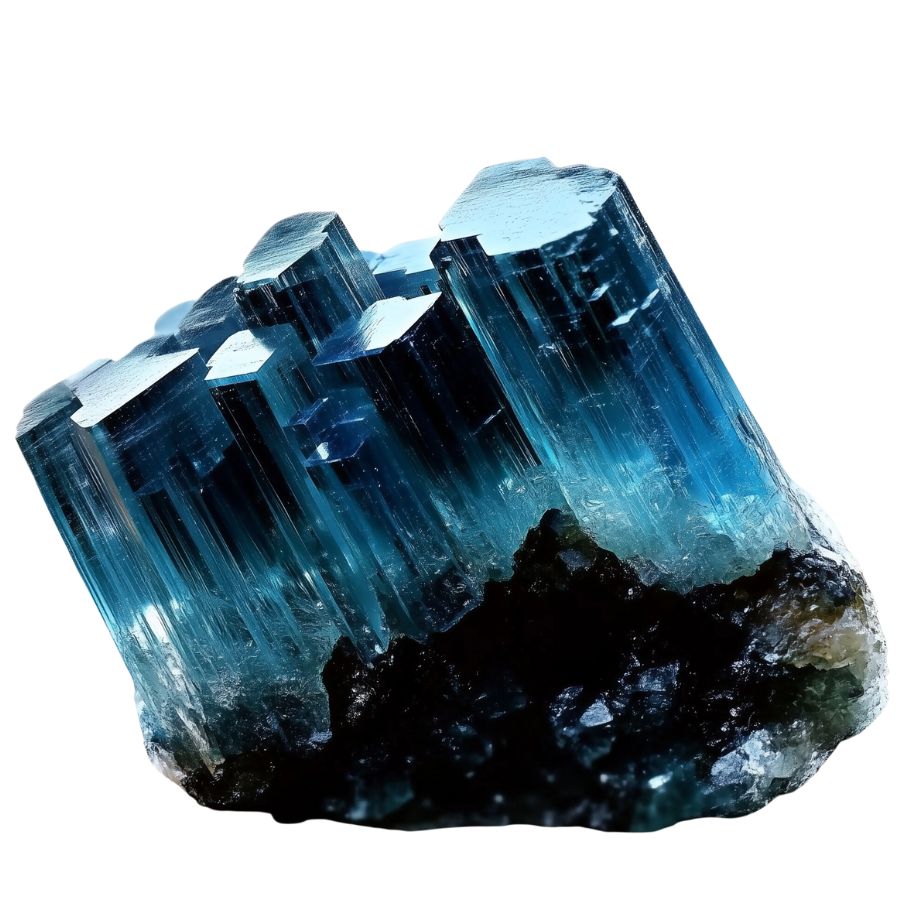
Indicolite is a rare and captivating blue to blue-green stone. It’s prized for its pure, bright blue color, which is considered the rarest within the tourmaline family. The hues can range from light blue-green to deep, rich blue, often with high clarity.
What sets Indicolite apart is its unique optical effects. It shows pleochroism, appearing to change color when viewed from different angles. Some specimens also display chatoyancy, creating a “cat’s eye” effect when cut in a certain way.
Indicolite is sometimes called “Brazilian sapphire” due to its resemblance to the precious gem. However, they’re different minerals.
The increasing demand for blue tourmalines has made indicolite highly sought-after in the gemstone market, appreciated for its beauty and rarity.
Watermelon Tourmaline
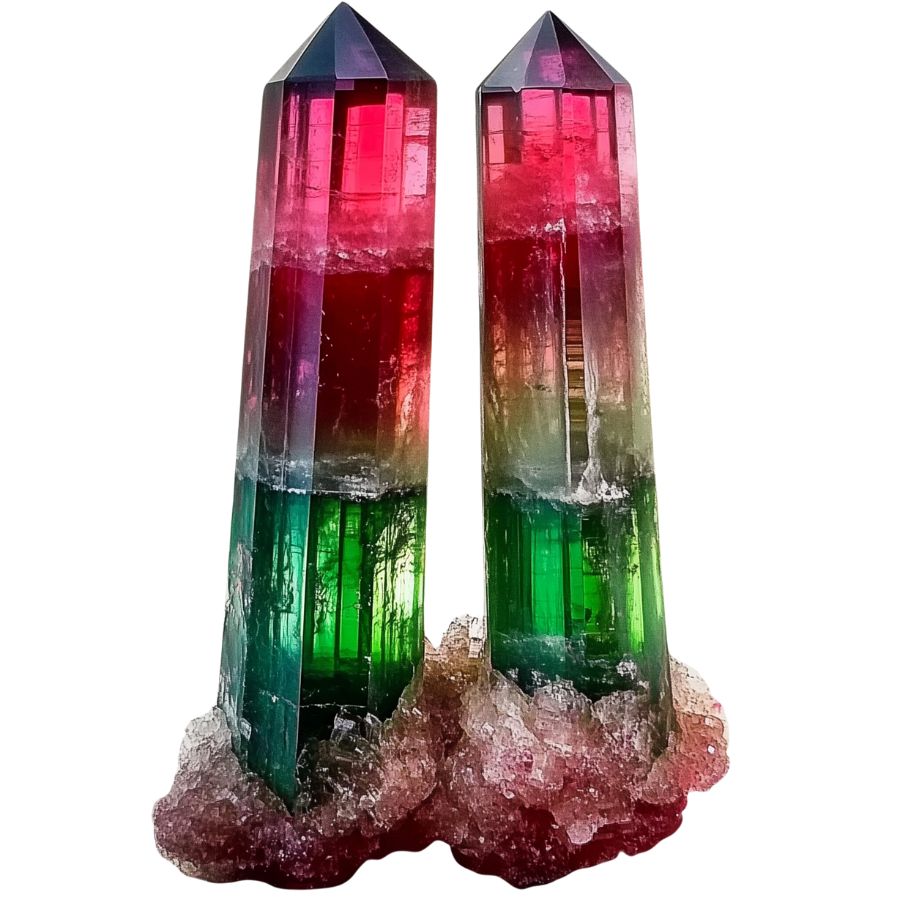
Watermelon tourmaline is truly one-of-a-kind. It looks just like a slice of watermelon, with a pink or red center and a green outer layer. This unique look happens because different elements join the crystal at different times as it grows.
These crystals often form in a rounded triangle shape. They’re see-through to somewhat clear and have a glass-like shine. When cut into slices, they really do look like little watermelons!
Cat’s Eye Tourmaline
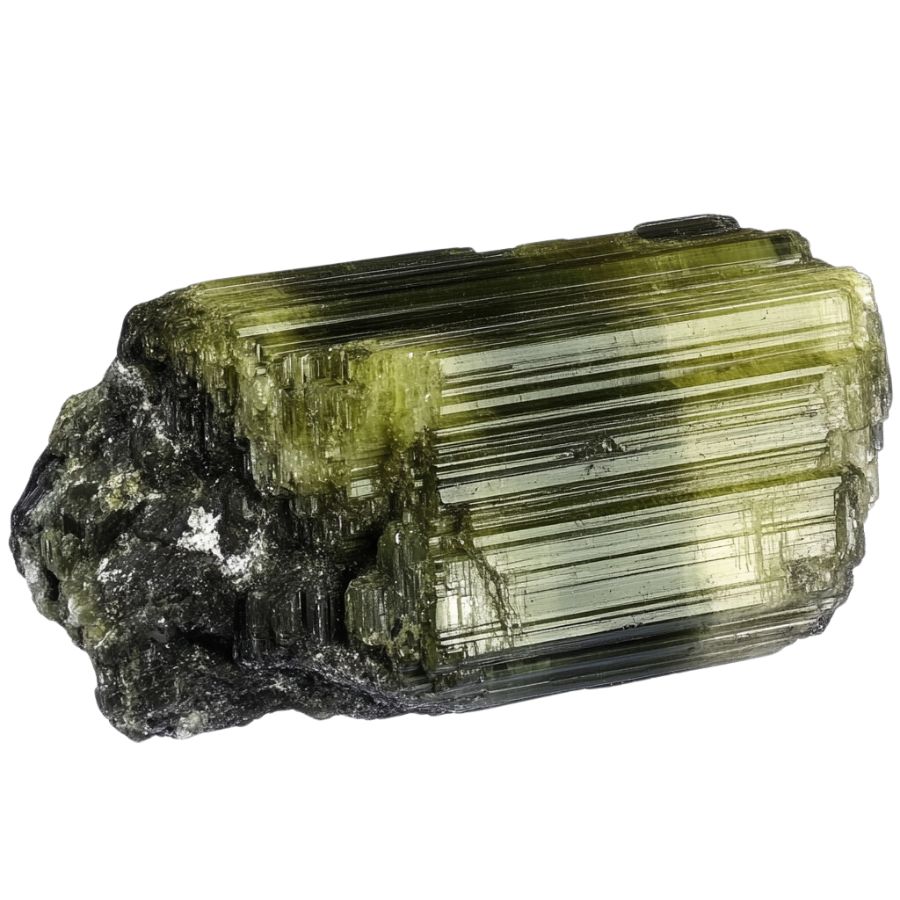
Cat’s eye tourmaline is known for its mesmerizing chatoyancy effect. This creates a bright band across the stone’s surface, resembling a cat’s eye.
This stone comes in various colors, from green to pink to brown, and is usually semi-translucent to opaque.
What makes this stone special is the perfect alignment of tiny, needle-like inclusions inside it. These scatter light in a unique way, creating that eye-catching effect. It’s quite different from other tourmalines that don’t have this feature.
Unlike other cat’s eye stones, Tourmaline offers a wider range of colors and is often more affordable.
Achroite
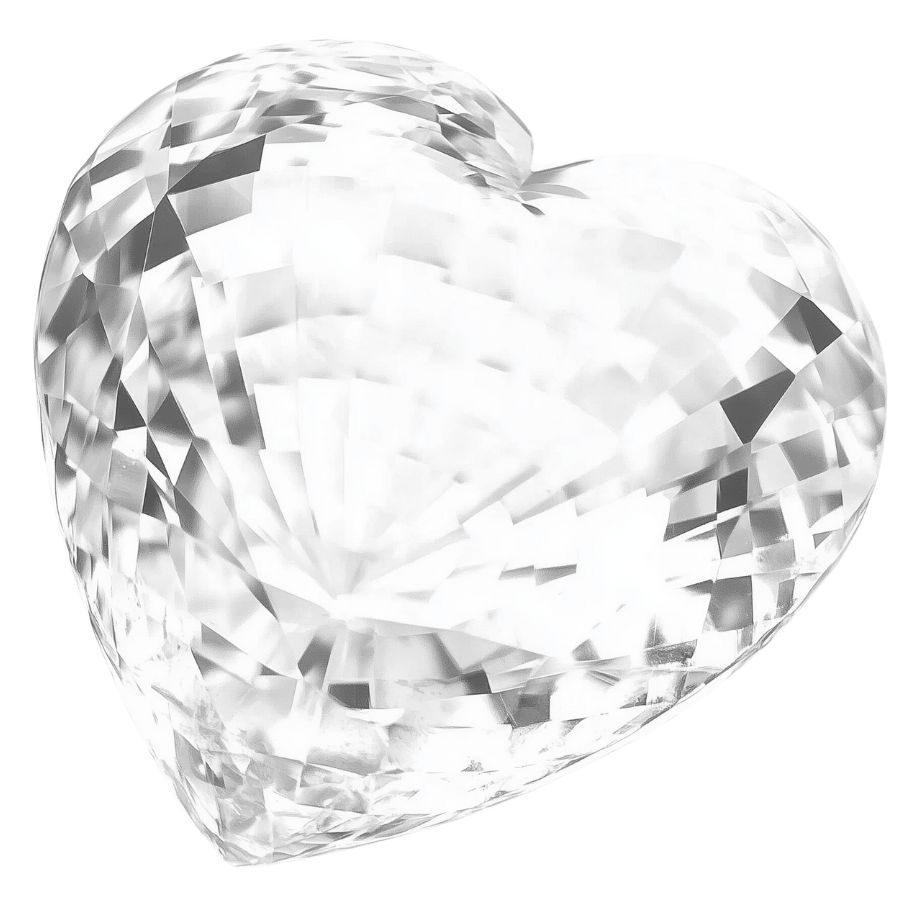
Achroite is a rare, colorless variety of tourmaline that looks like a drop of clear water turned to stone. It’s completely transparent, making it unique among tourmalines which usually have color. The name comes from Greek, meaning “without color.”
What’s special about achroite is that it doesn’t change color when viewed from different angles. It means the stone can be cut in many ways without losing its clarity.
Verdelite
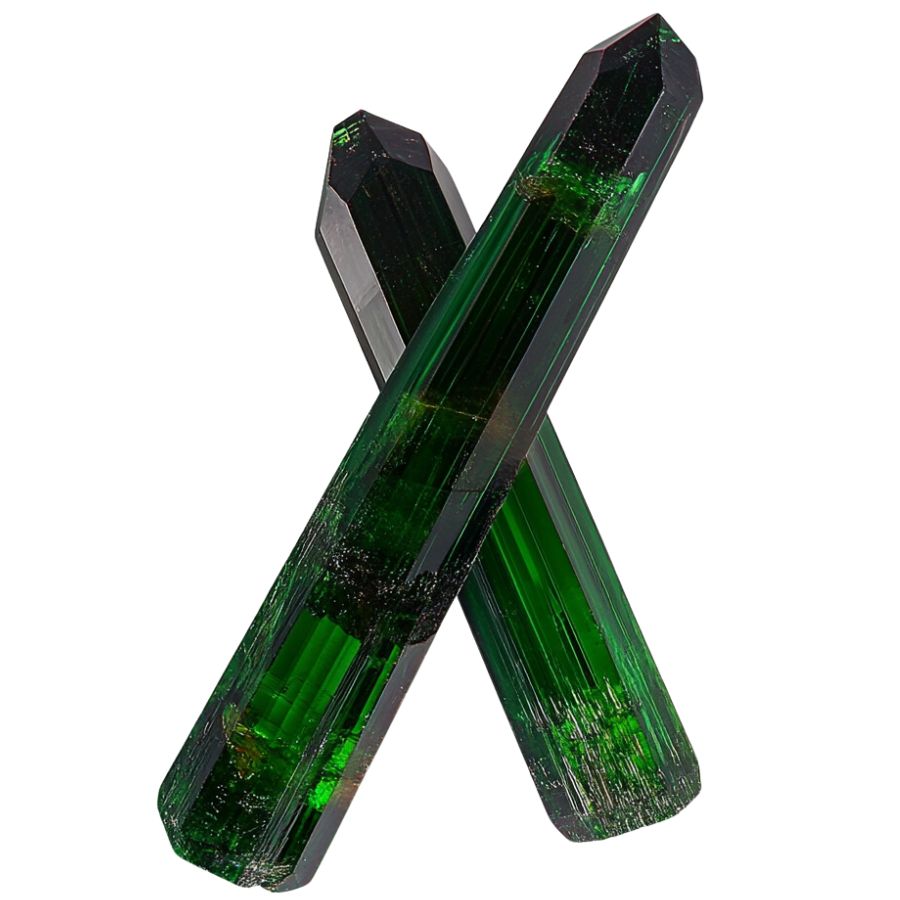
Verdelite is known for its beautiful green color. It can range from light green to deep emerald.
One thing that makes verdelite special is that you can find big, clear crystals of it. This isn’t always easy with other gemstones.
People love using verdelite in jewelry because its rich color and interesting light effects make it a popular choice for all kinds of accessories. Each piece of verdelite is like a little piece of nature you can wear.
Paraíba Tourmaline
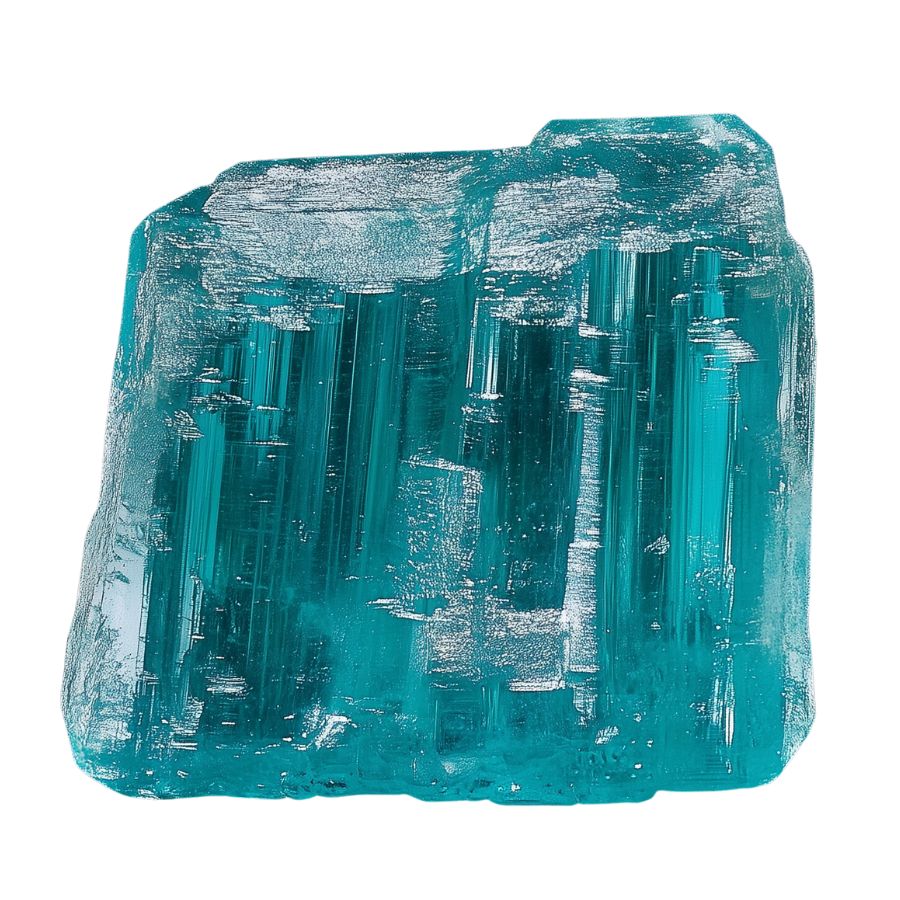
Paraíba Tourmaline is a rare gemstone that catches the eye with its vibrant neon blue or green color. It’s like no other tourmaline you’ve seen before. The intense glow comes from copper in the stone, making it stand out from its cousins.
This stone is one of the rarest. For every 10,000 diamonds mined, only one Paraíba tourmaline is found.
It was only discovered in the late 1980s, making it a newcomer in the gem world. But Paraíba tourmaline’s unique color and rarity quickly made it a favorite among gem lovers.
Its discovery caused quite a stir in the gem community. Even small stones can be valuable because of how rare and beautiful they are.
What Rough Tourmaline Looks Like
When you’re out looking for rough Tourmaline on your own it’s important to know what you’re looking for. But before we dive into specifically what to look for you need to make sure you understand the type of rocks and minerals you’re seeing.
DON'T MISS OUT ON ANY GREAT FINDS!
While you're out searching for Tourmaline you're going to find A LOT of other interesting rocks and minerals along the way. The last thing you want to do is toss out something really interesting or valuable. It can be easy to misidentify things without a little guidance.
We've put together a fantastic field guide that makes identifying 140 of the most interesting and valuable rocks and minerals you will find REALLY EASY. It's simple to use, really durable, and will allow you to identify just about any rock and mineral you come across. Make sure you bring it along on your hunt!
Now, back to the identification specifics:
Here are some tips to help you recognize rough tourmaline.
Look for Color Variations
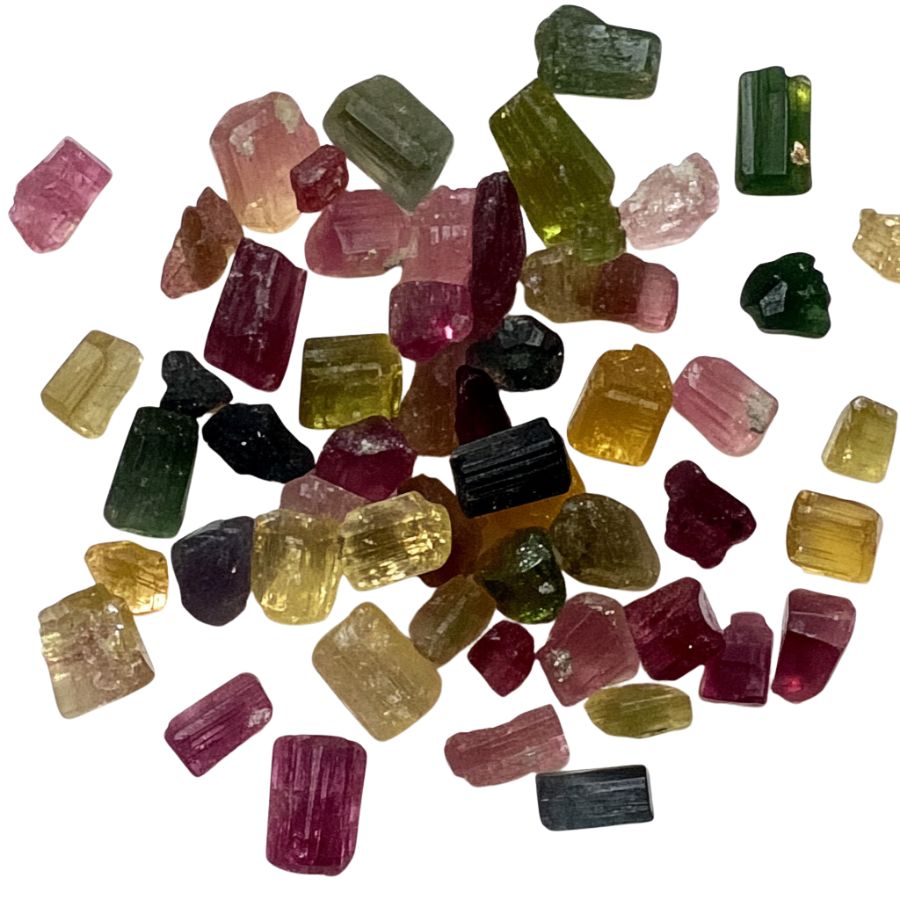
Tourmaline comes in many colors, like pink, green, blue, and even black. Some pieces have multiple colors, like watermelon tourmaline, which is pink and green.
If you see these color mixes, it’s likely tourmaline. Keep an eye out for vibrant shades.
Assess the Density and Weight
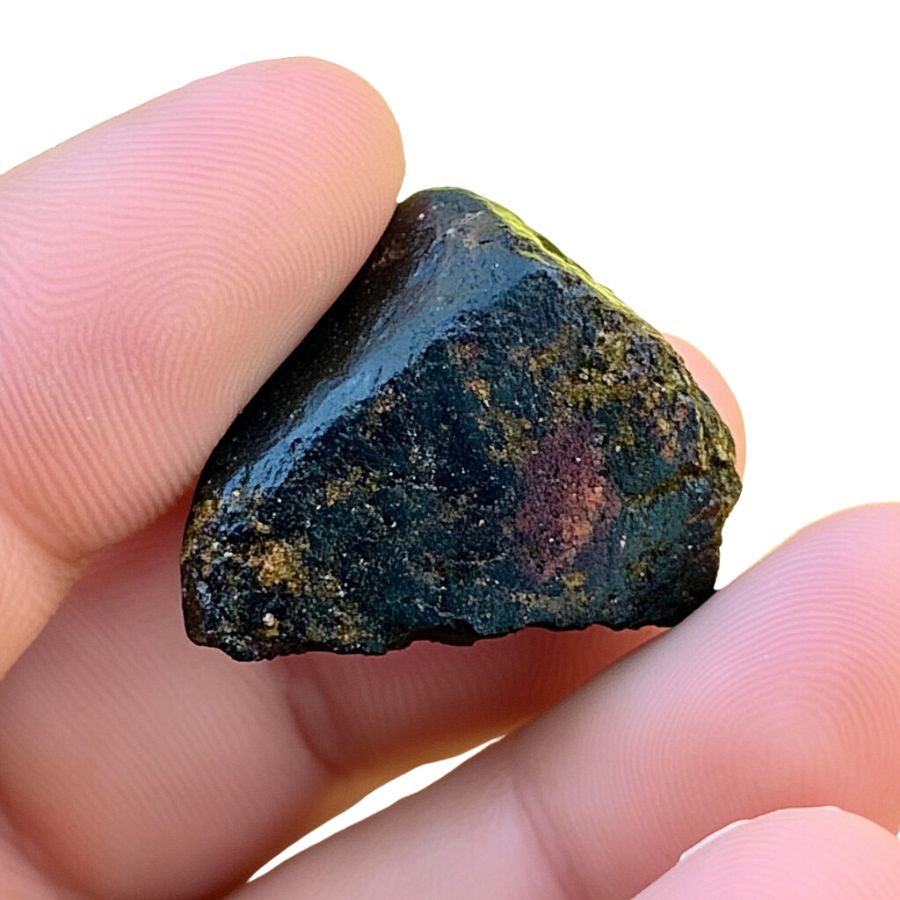
Rough tourmaline is relatively heavy for its size. If you pick up a piece and it feels denser than expected, it could be tourmaline. This weight can help you confirm your find.
Examine the Crystal Structure
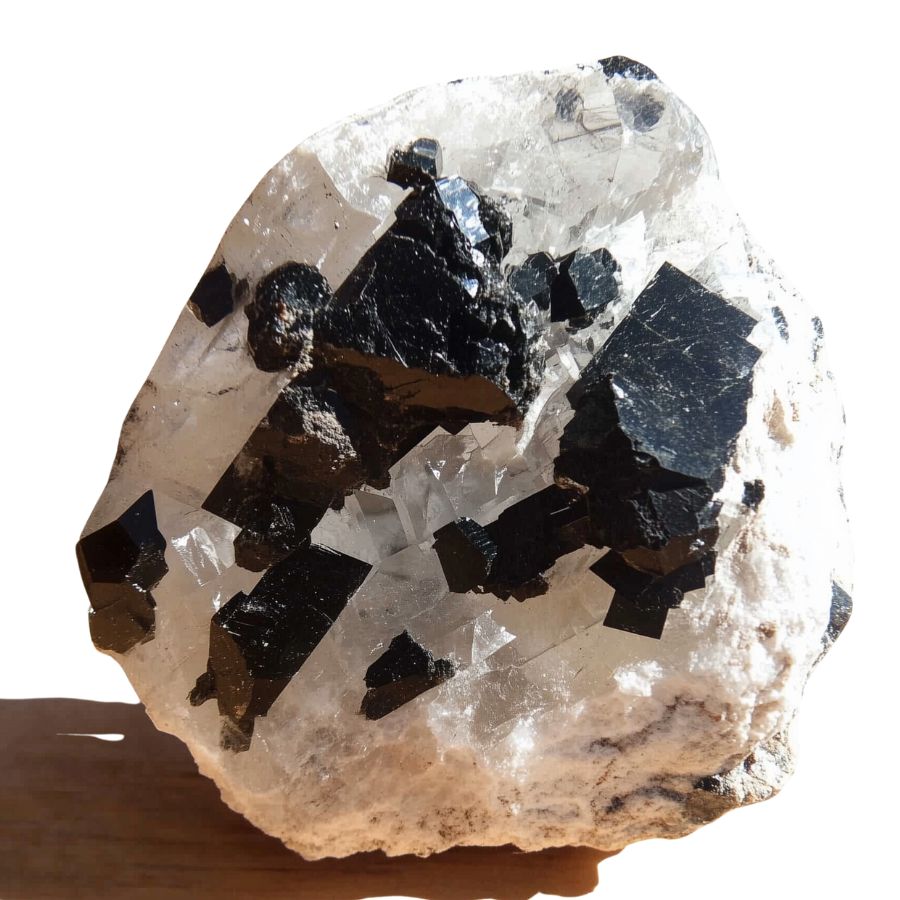
Tourmaline features distinctive crystal shapes, ranging from slender and elongated to chunky forms. Look for triangular cross-sections and striations on the surface, which indicate its unique growth patterns.
Check for Transparency
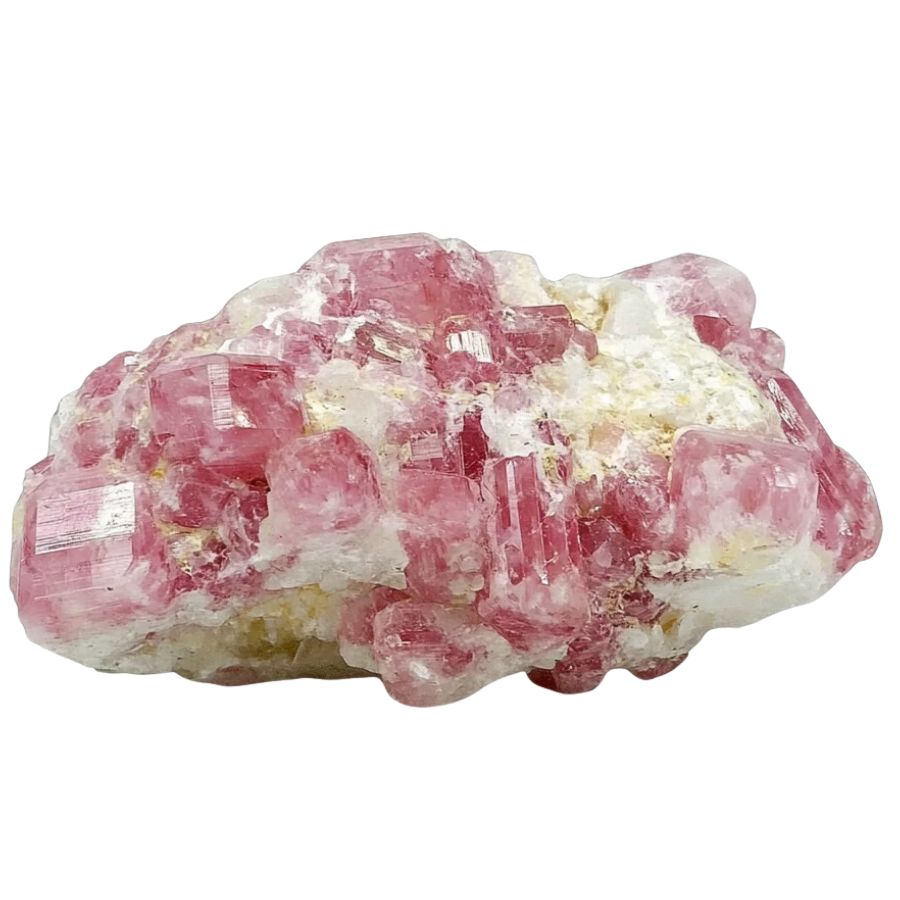
Some rough tourmaline can be slightly transparent. If you hold it up to the light, you might see through it a bit. This transparency can be a good sign that you have tourmaline.
A Quick Request About Collecting
Always Confirm Access and Collection Rules!
Before heading out to any of the locations on our list you need to confirm access requirements and collection rules for both public and private locations directly with the location. We haven’t personally verified every location and the access requirements and collection rules often change without notice.
Many of the locations we mention will not allow collecting but are still great places for those who love to find beautiful rocks and minerals in the wild without keeping them. We also can’t guarantee you will find anything in these locations since they are constantly changing.
Always get updated information directly from the source ahead of time to ensure responsible rockhounding. If you want even more current options it’s always a good idea to contact local rock and mineral clubs and groups
Tips on where to look
Once you get to the places we have listed below there are some things you should keep in mind when you’re searching:
Look for Sedimentary Rocks
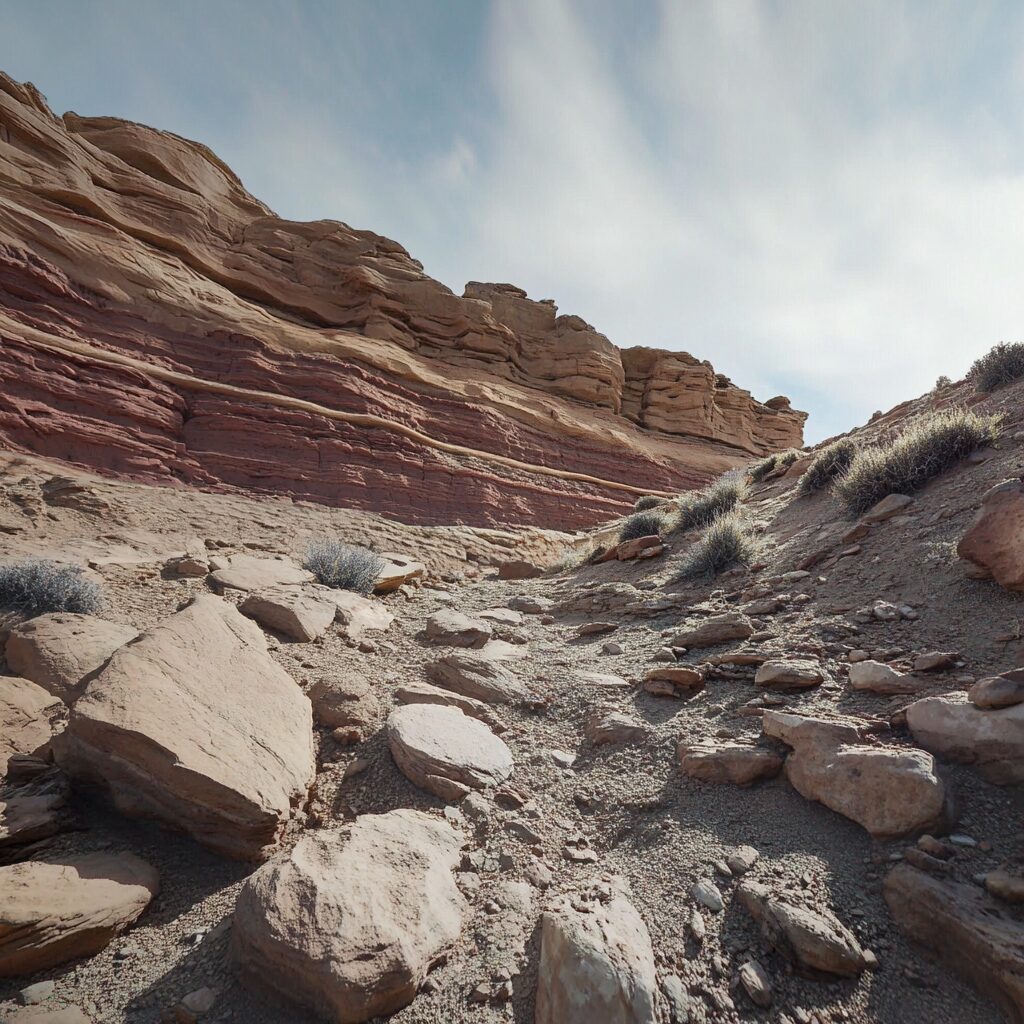
Sedimentary rocks are great places to find tourmaline. These rocks form from layers of sand, mud, and minerals. Over time, minerals like tourmaline can get trapped.
Look in riverbeds or areas where sediment has built up. You might find small pieces or even larger crystals.
Explore Mines
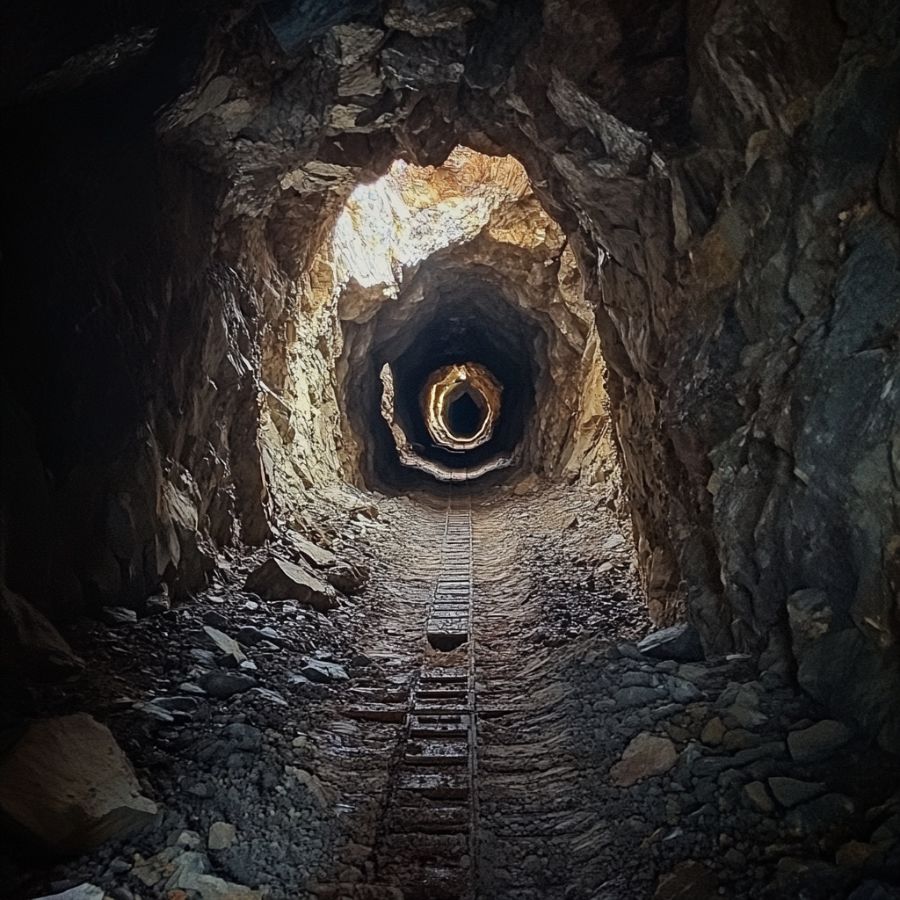
Mines are great spots to find tourmaline. Many mines across the U.S. extract various gemstones, including tourmaline.
Some mines even allow visitors to search for gems themselves. Always check if they have guided tours or special digging days.
Search in Gravel Pits

Gravel pits are often overlooked, but they can be treasure troves. These pits dig deep into the earth, exposing layers of rock.
Tourmaline can be found in the gravel. Just sift through the material carefully.
The types of Tourmaline can you find around the state
These are the different types of tourmaline that you might come across in Alaska:
- Green tourmaline
- Elbaite
- Liddicoatite
- Schorl
Some Great Places To Start
Here are some of the better places in the state to start looking:
Denali Borough

Denali Borough has a population of 1,619 according to the 2020 census, reflecting a decrease from 1,826 in 2010. Healy serves as the borough seat and is the most populated community, while Anderson is its only incorporated place.
Established in December 1990, the borough was formed from a region that was previously part of the Unorganized Borough.
Early inhabitants were nomadic native Alaskans, and the area saw growth with the establishment of a mining camp near Healy before 1902 and the construction of the Alaska Railroad in the early 1920s.
Matanuska-Susitna Borough

Matanuska-Susitna Borough, often called the Mat-Su Borough, has a population of 107,801 as of the 2020 census. The borough seat is Palmer, while Knik-Fairview is the largest community.
It encompasses the entire Matanuska and Susitna Rivers, which flow into Cook Inlet along the southern border.
The borough is one of the few agricultural areas in the region and has hundreds of identified mines, with gold, copper, and silver being the primary commodities extracted.
Lost River Valley

Lost River is a waterway that rises in the York Mountains and flows into the Bering Sea, located 10 miles west of Port Clarence.
This 10-mile-long river drains the central part of the York Mountains and has two tributaries: Tin Creek and Cassiterite Creek, which have been found to contain tin ore.
In 1898, a group of prospectors shipwrecked near the river’s mouth, leading to the naming of Lost River and the establishment of a mining district, although no gold was discovered.
Ear Mountain

Ear Mountain, known as Iŋiġagik in Inupiaq, stands isolated with an elevation of 2,329 feet and features a belt of Cretaceous tin “granites.”
Located 50 miles north of Teller, the mountain rises from a well-marked plateau surface around 1,000 feet high and is surrounded by coastal flats and valleys.
The surrounding sedimentary rocks primarily consist of quartzites and dark slates, while the core features a granite mass that is the source of tin mineralization in the area.
Southeast Fairbanks Census Area

Southeast Fairbanks Census Area is a designated census area that includes parts of several national protected areas.
It encompasses sections of Tetlin National Wildlife Refuge, Wrangell-St. Elias National Park and Preserve, and Wrangell-Saint Elias Wilderness.
Additionally, the area features portions of the Yukon-Charley Rivers National Preserve. These protected areas contribute to the region’s natural landscape and ecosystem.
Always Confirm Access and Collection Rules!
Before heading out to any of the locations on our list you need to confirm access requirements and collection rules for both public and private locations directly with the location. We haven’t personally verified every location and the access requirements and collection rules often change without notice.
Many of the locations we mention will not allow collecting but are still great places for those who love to find beautiful rocks and minerals in the wild without keeping them. We also can’t guarantee you will find anything in these locations since they are constantly changing.
Always get updated information directly from the source ahead of time to ensure responsible rockhounding. If you want even more current options it’s always a good idea to contact local rock and mineral clubs and groups
Places Tourmaline has been found by county
| County | Location |
| Aleutians East Borough | Aleutian Islands Mining District |
| Bethel Census Area | Aniak Mining District |
| Bethel Census Area | McGrath Mining District |
| Bethel Census Area | Redoubt Mining District |
| Denali Borough | Denali National Park and Preserve |
| Denali Borough | Kantishna Mining District |
| Denali Borough | Dillingham Census Area |
| Denali Borough | Bethel Mining District |
| Denali Borough | Bristol Bay Mining District |
| Denali Borough | Bristol Bay Region District |
| Fairbanks North Star Borough | Fairbanks Mining District |
| Juneau | Berners Bay Mining District |
| Juneau | Juneau Mining District |
| Kodiak Island Borough | Kilokak Creek |
| Lake and Peninsula Borough | Bristol Bay Mining District |
| Nome Census Area | Council Mining District |
| Nome Census Area | Nome Mining District |
| Nome Census Area | Kougarok prospect |
| Nome Census Area | Brooks Mountain |
| Nome Census Area | Potato Mountain |
| Nome Census Area | Serpentine Mining District |
| North Slope Borough | Canning Mining District |
| Northwest Arctic Borough | Fairhaven Mining District |
| Valdez-Cordova Census Area | Chistochina Mining District |
| Valdez-Cordova Census Area | Nizina Mining District |
| Yukon-Koyukuk Census Area | Alder Gulch Mine |
| Yukon-Koyukuk Census Area | Circle Mining District |
| Yukon-Koyukuk Census Area | Hot Springs Mining District |
| Yukon-Koyukuk Census Area | Hughes Mining District |
| Yukon-Koyukuk Census Area | Iditarod Mining District |
| Yukon-Koyukuk Census Area | Innoko Mining District |
| Yukon-Koyukuk Census Area | Kaiyuh Mining District |
| Yukon-Koyukuk Census Area | Kantishna Mining District |
| Yukon-Koyukuk Census Area | Koyukuk Mining District |
| Yukon-Koyukuk Census Area | Melozitna Mining District |
| Yukon-Koyukuk Census Area | Mystery Mountains East Prospect |
| Yukon-Koyukuk Census Area | Pork Chop Prospect |
| Yukon-Koyukuk Census Area | Pupinski Prospect |
| Yukon-Koyukuk Census Area | Ruby Mining District |
| Yukon-Koyukuk Census Area | Sheenjek Mining District |
| Yukon-Koyukuk Census Area | Shungnak Mining District |
| Yukon-Koyukuk Census Area | Tarn Prospect |
| Yukon-Koyukuk Census Area | Tolovana Mining District |
| Yukon-Koyukuk Census Area | Yukon Flats Mining District |


